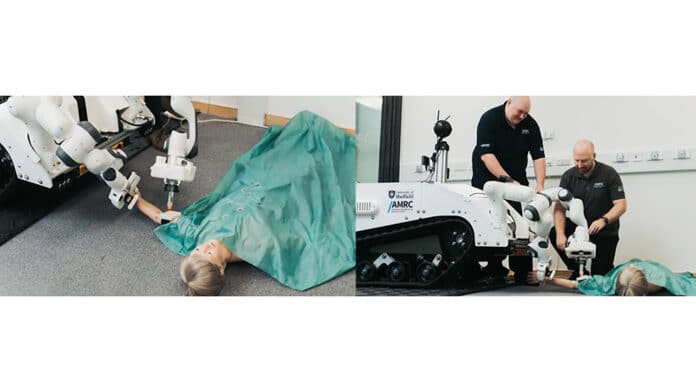Scientists at the University of Sheffield have recently developed game-changing robotics technology. They have developed a robotic vehicle that can provide remote medical treatment to casualties in high-risk emergency environments.
Scientists used medical telexistence (MediTel) technology to create this mobile, robotic-controlled uncrewed ground vehicle (UGV). It features virtual reality (VR) functionality, allowing medics and operators to evaluate critical casualties in dangerous circumstances while maintaining safety.
The UGV comprises two robotic arms that can operate medical equipment to effectively perform a critical initial assessment of a casualty within 20 minutes. This assessment includes taking the patient’s temperature and checking their blood pressure and heart rate. It also includes palpating the abdomen and using an auto-injector to relieve pain.
David King, Head of Digital Design at the AMRC, said: “Our MediTel project has demonstrated game-changing medical telexistence technology that has the potential to save lives and provide remote assessment and treatment of casualties in high-risk environments such as humanitarian disasters.
“Developing and field testing a state-of-the-art, complex system such as MediTel in just nine months has been an incredible achievement and a testament to the skills and capabilities of the entire project team.”
The team has created a comprehensive method for doing casualty triage in dangerous settings.
“MediTel combined existing medical devices with state-of-the-art robotics systems to develop a platform capable of allowing a remote operator to navigate through potentially difficult terrain and provide critical diagnoses of high-risk casualties.”
Sanja Dogramadzi, Professor of Medical Robotics and Intelligent Health Technologies at the University’s Department of Automatic Control and Systems Engineering and Director of Sheffield Robotics, said:
“This project has allowed us to develop a platform that could be used by multiple emergency response services. It now serves us with the basis for our research to be extended and look into enabling resilient autonomy and integrating other sensing modalities to assist patient triage in other remote settings.”
